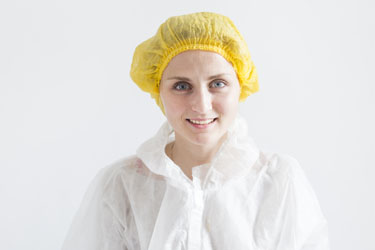Veterinary Clinic Biosecurity Tips

Taking the steps to protect against the risk and consequences of acquiring an infectious disease within a veterinary clinic or hospital is important. Health safety involves not only the other patients, but the clients and staff also.
Need for a Biosecurity Plan
In a veterinary clinic, there are often animals, clients, and staff within close range of one another. Since disease pathogens can be passed through direct and indirect contact with an animal that is infected, the clinic environment is ripe with chances for not only acquiring a disease, but also furthering its spread of infection. To prevent this from happening, a biosecurity plan needs to be established that focuses on the procedures that should be followed once an animal comes through the entrance door.
Precautions to Prevent Infection
Whenever an animal is suspected of being ill, steps should be taken to prevent the spread of infection to the other animals and people within the clinic. Biosecurity guidelines that define the steps that reduce the risk of disease transmission should include the following:
Isolation
Animals that appear ill should be:
- Moved in/out of the clinic through a separate door that removes chance for contact with other patients and clients
- Placed within a dedicated examination room that can be thoroughly decontaminated once the examination is finished
- Clearly identified so staff can take the precautions necessary to protect themselves as well as take the steps to stop the disease from spreading to their clients and patients.
Personnel
To reduce the spread of infection, contact with the animal should be limited to only essential personnel. They should wear freshly cleaned or disposable attire when handling an animal with a potential infectious disease. Protective clothing may include:
- Gowns
- Overalls
- Gloves
- Masks
- Shoe coverings (or a footbath should be available to use when entering/exiting the room)
- Eye protection
Following the examination when contact with the infected animal is over, protective clothing items should either be cleaned or disposed of to prevent the chance of spreading disease.
Room and Equipment -
Removing the potential for disease transmission requires taking the steps to make sure that the examination room and the equipment inside remain germ-free. If possible, room should be:
- Empty of non-essential equipment
- Well ventilated with an exhaust to the outside of the building
- Free of stored items
- Able to be easily cleaned and disinfected
- Limited to access with other well-populated areas
- Identified as to its use, with a sign-in sheet attached that informs of contact with an infected animal and cleaning needs.
Client Discussion
Owners that are concerned and worried about their sick pet may not be thinking of the risks their animal poses to others by being ill. Part of the biosecurity plan should involve developing a list of discussion points that identify the client’s responsibilities toward preventing the spread of disease. The discussion topics should include items such as:
- The way animal-to-animal diseases spread
- Zoonotic disease, what it is and how to keep it from spreading to others in the home
- How to establish a quarantine area within the home
- Methods for isolating sick animals when other animals are in the home
- Methods to thoroughly clean and sanitize animal’s environment.
Halting the spread of disease can be difficult within a veterinary clinic, which is why it’s important to establish a plan that protects against the risks passed through contact with an infected animal.
Additional Resources
Ensure biosecurity measure are followed inside your practice by instituting these precautions for zoonotic disease transmission. Discover more about the importance of disinfectants in biosecurity in Animal Health Solutions.
Sources:
Careers
Are you looking for a place to let your talents shine? At Covetrus, we help our practitioner customers better serve their patients and take pride in providing the best customer experience possible. Search our open positions to see our available opportunities.
Newsletter
Stay current with what’s going on with Covetrus, subscribe to receive our newsletter and email communications. Subscribers will receive the latest information in practice management, sales and marketing, animal health, and more.


Leave a comment